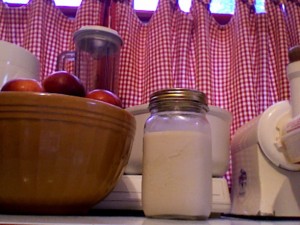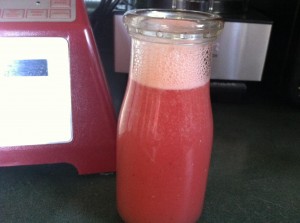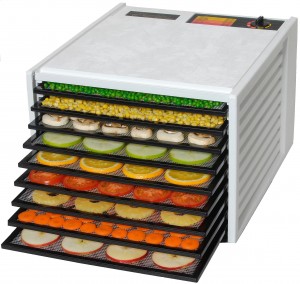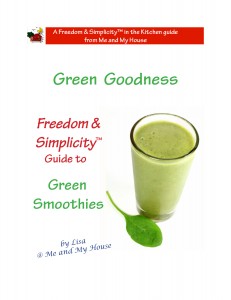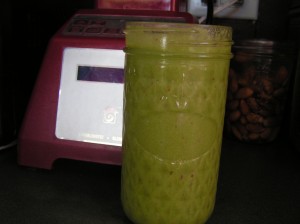🙂 Yep, I’m posting on yogurt again. I told you last week I’d let you know how the raw goat milk yogurt comes out. Delicious! (Click here for more traditional yogurt making instructions.)
.
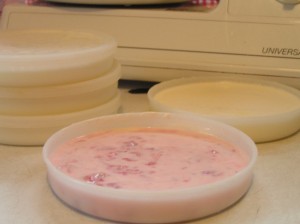
Raw Goat Milk Yogurt – plain and strawberry
Here’s how I did it.
Raw Goat Milk Yogurt
Prepare containers and utensils. Wash, rinse very well, pour boiling water over/into them.
1 qt. raw goat milk – heat gently on stove to 110°F. on candy or other food thermometer. (No more. You want it to remain raw.)
Whisk in: 3-4 Tbl. organic, natural plain yogurt with live cultures or recommended amount of dry yogurt culture.
Dump water out of yogurt containers and pour yogurt in. I used the containers that work in my dehydrator since that is where I cultured my yogurt this time. You can use a quart glass jar or smaller glass jars or a wide mouth glass or stainless steel thermos. Put lid(s) on.
Put in warm place to culture. You need a place that will keep a steady temp of 95-110°F. As I said, this time I used my dehydrator, that has a thermostat control on it. Culture 8-10 hours, until it sets up. Other ways you can culture yogurt are listed in a previous post on yogurt that has complete instructions and various uses.( I DO NOT find a crock pot, even on keep warm with the lid off to hold a low enough temp.) More yogurt posts here.
My additions for flavored yogurt per serving – all optional. Add 1 or more. (adjust amounts to your liking):
- 1/2 tsp. raw organic agave nectar (or raw honey)
- a couple drops of pure organic vanilla extract/flavoring
- 2-3 fresh or frozen (thawed) strawberries, mashed up – or 1-2 Tbl. other fruit
Enjoy! I am.
OK, you do need a source of raw goat’s milk for this. You can substitute raw cow’s milk if you have a source/use cow’s milk. (I recommend not, but raw IS SO MUCH better for you than pasteurized, homogenized, chemically, feed-lot raised, …)
Want more help for yogurt making? Get our dirt-cheap Freedom & Simplicity™ Guide to Yogurt Making.






